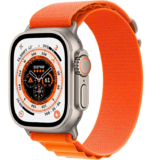Survey: More Than Half of Americans Can’t Afford The Emergency Room
In the grand spectacle of life, where financial stability often feels like a precarious tightrope walk, Bankrate’s latest survey unveils a stark reality: 56% of U.S. adults find themselves teetering on the edge, lacking the financial cushion to absorb the impact of a $1,000 emergency expense. In a world rife with economic uncertainties, it becomes evident that, for many, the safety net is not the robust security blanket it should be.
The survey paints a vivid canvas of financial vulnerability, with 35% of respondents candidly admitting they would need to engage in financial acrobatics to cover an unexpected expense. Credit cards emerge as the go-to lifeline for 21% of individuals, while 10% entertain the idea of borrowing from friends or family, and 4% contemplate the prospect of taking out a personal loan. Faced with this financial turbulence, 16% reluctantly tighten their belts, slashing spending in other areas to navigate the storm.
Mark Hamrich, Bankrate’s senior economic analyst, sounds the alarm on the risky game many Americans are playing with their finances. “All too many Americans are playing with fire when it comes to their personal finances in the sense that they don’t have more in emergency savings,” he cautions. The adversary in this financial drama? Inflation, a relentless foe that has hampered progress on the savings front.
Age becomes a defining factor in the battle against financial instability, with the survey revealing a correlation between age and the ability to weather a $1,000 expense without breaking a sweat. Baby boomers (ages 60–78) stand out, with a reassuring 59% expressing confidence in handling such an expense. In contrast, 43% of millennials (ages 28–43), 36% of Gen Xers (ages 44–59), and a meager 31% of Gen Zers (ages 18–27) navigate these financial waters with less confidence.
The backdrop of historically high inflation, peaking at 9.1% in June 2022 before cooling to 3.4% year–over–year in December, undeniably strains household budgets. The ripple effect is palpable, with Americans resorting to credit cards as makeshift life vests in navigating everyday expenses. Despite the Federal Reserve’s commitment to quelling inflation through aggressive rate hikes, credit card balances accelerate, hitting an alarming average annual percentage rate of 20.72%.
As the financial tightrope continues its precarious sway, the survey serves as a poignant reminder that, in life’s unpredictable circus, a well-prepared safety net can be the difference between a graceful balancing act and a perilous fall. Now, more than ever, is the time to reinforce that financial safety net before the winds of economic uncertainty blow too strong. In this high-stakes financial performance, the spotlight is on securing stability for all those teetering on the edge.






